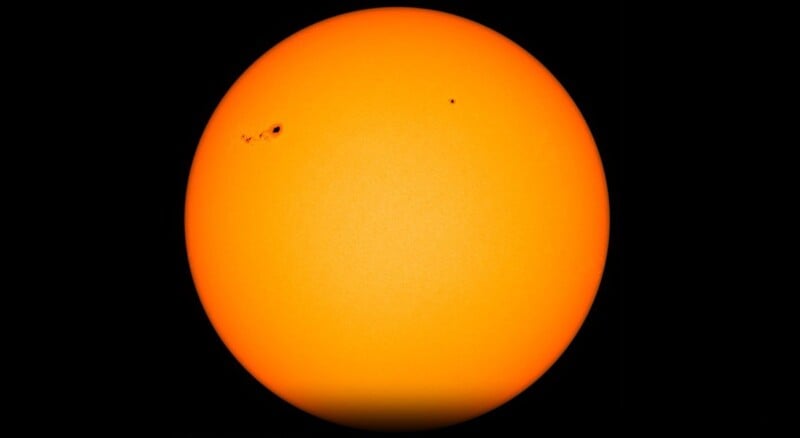Powerful Twin Solar Flares Erupted This Week, Did They Cause Cell Outages?

Two powerful solar flares erupted from the Sun on the evening of Wednesday, February 21, and again in the early morning today, February 22. Coincidentally, there were widespread cellular outages across the United States this morning as well.
The first flare, an X1.8-class flare, erupted at 6:07 PM ET on February 21, with the second, an X1.7-class flare, occurring at 1:32 AM ET on February 22, as Space reports. Both solar events came from a region of the Sun called Region 3590, which “continues to exhibit strong magnetic complexity,” the National Oceanic and Atmospheric Administration (NOAA) explains in a statement about the eruptions.

For context, X-class is the largest rating for solar flares. These are followed by M-class flares, which are ten times smaller. After the M-class, there are C and B classes, with B being the weakest. B-class flares are too weak to affect Earth. Each class also has subdivisions ranging from one to nine.

NOAA adds that it hasn’t observed any Coronal Mass Ejections (CMEs) resulting from the events at this point, but they can’t be ruled out. Nevertheless, the agency issued an alert at 6:58 AM ET today for solar radio emissions “in association with major eruptions on the Sun and are typically associated with strong coronal mass ejections and solar radiation storms,” explains the alert.
One of the most significant impacts of solar flares is radio blackouts. Indeed, individuals in Australia, Indonesia, India, and East Africa have reported experiencing radio and GPS/GNSS disruptions. Meanwhile, widespread cellular outages were reported throughout the United States on Thursday morning. The Associated Press reported tens of thousands of outages across major cellular carriers such as AT&T, Verizon, and T-Mobile. As of 12:30 PM ET, some 25,000 AT&T customers were still reporting outages, according to CNN, but that is significantly lower than the peak of roughly 74,000 AT&T customer reported outages at 9 AM ET.

It isn’t clear if the cellular outages in the U.S. are related to the solar flares, but reports of the outages began around the same time as the flares. Solar scientists are casting doubts on the connection, however.
“Flares only cause radio degradation on the *dayside* of the Earth. As you can see below, the U.S. was not affected by the event. So it’s just a coincidence!” solar astrophysicist Ryan French at the National Solar Observatory posted on X. Thus far, it seems like a coincidence, but it is a surprising one.

The effects of the flares may be felt for days. NOAA shared a forecast discussion at 7:30 AM ET on Thursday, February 22 that noted an “eruptive filament” in the northwest quadrant of the Sun’s visible disk on February 21. It goes on to say that “analysis and modeling showed the bulk of the ejecta being ahead of Earth’s orbit. However, a glancing influence remains possible on” February 25.
The Sun’s activity is increasing as it nears the most active phase of its roughly 11-year solar cycle, called “solar maximum.” This increase in activity could mean we see even more space weather events impacting communications and spacecraft in orbit. On a more positive note, it could also result in more widespread auroras worldwide.